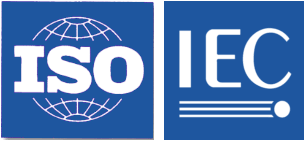Verifiable Credential Data Integrity 1.0
A protocol to ensure the integrity of VC and can be used for Third Pary Credentials or Product Information issued as VCs.

A protocol to ensure the integrity of VC and can be used for Third Pary Credentials or Product Information issued as VCs.

A rights language model to express access rights to e.g. product information, organisational credentials or services

A rights language vocabulary to express access rights to e.g. product information, organisational credentials or services

A JSON-based Serialization for Linked Data. A format that is often used to encode Verifiable Credentials.

The ISO/IEC 20944 series of International Standards provides the bindings and their interoperability for metadata registries, such as those specified in the ISO/IEC 11179 series of International Standards. ISO/IEC 20944-1:2013 contains an overview, framework, common vocabulary, and common provisions for conformance for the ISO/IEC 20944 series of International Standards.

ISO/IEC TR 20943-6:2013 covers the framework for generating ontologies based on ISO/IEC 11179-3, and provides the procedure and mapping model for generating ontologies.
ISO/IEC TR 20943-6:2013 describes a method to generate ontologies for a context using concepts in ISO/IEC 11179-3. Most ontologies are basically composed of classes (concepts), properties, relations between classes, and instances (objects or individuals). ISO/IEC TR 20943-6:2013 considers the generation of ontology consisting of a subset of ontology components required for defining ontologies at the conceptual level which is called "FGO_Ontology". ISO/IEC TR 20943-6:2013 uses the prefix "FGO_" to avoid confusion from homonym and to clearly identify each term. For example, "Property" is specified in ISO/IEC 11179-3 as well as in ISO/IEC TR 20943-6:2013, but the meaning is slightly different. ISO/IEC TR 20943-6:2013 defines FGO_Class, FGO_Property, and FGO_Relation to distinguish between components of FGO_Ontology and components of ISO/IEC 11179-3.
ISO/IEC TR 20943-6:2013 specifies the method to generate ontologies using registered concepts in ISO/IEC 11179-3 Concepts metamodel region and Data description metamodel region. ISO/IEC TR 20943-6:2013 specifies a procedure and method for generating ontologies due to an application domain reusing concepts registered in a metadata registry.
ISO/IEC TR 20943-6:2013 does not include a way to describe in a specific ontology description language, such as Resource Description Framework (RDF), RDF Schema (RDFS), Web Ontology Language (OWL), Topic Map, and Knowledge Interchange Format (KIF).

The purpose of ISO/IEC TR 20943-5:2013 is to describe a procedure for establishing metadata crosswalks based on the ISO/IEC 11179 series, subsequently improving mapping quality between metadata.
Therefore, ISO/IEC TR 20943-5:2013 describes a metadata mapping procedure (MMP), which can maximize the interoperability among ISO/IEC 11179-based registries through achieving metadata registry content consistency.

The purpose of this technical report is to describe a set of procedures for the consistent registration of value domains and their attributes in a registry. This technical report is not a data entry manual, but a user's guide for conceptualizing a value domain and its components for the purpose of consistently establishing good quality metadata. An organization may adapt and/or add to these procedures as necessary.

An ISO/IEC 11179-based metadata registry (MDR) (hereafter referred to as a "registry") is a tool for the management of shareable data; a comprehensive, authoritative source of reference information about data. It supports the standardization and harmonization processes by recording and disseminating data standards, which facilitates data sharing among organizations and users. It provides links to documents that refer to data elements and to information systems where data elements are used. When used in conjunction with an information database, the registry enables users to better understand the information obtained.
A registry does not contain data itself. It contains the metadata that is necessary to clearly describe, inventory, analyze, and classify data. It provides an understanding of the meaning, representation, and identification of units of data. The standard identifies the information elements that need to be available for determining the meaning of a data element (DE) to be shared between systems.
The purpose of ISO/IEC TR 20943-1:2003 is to describe a set of procedures for the consistent registration of data elements and their attributes in a registry. ISO/IEC TR 20943-1:2003 is not a data entry manual, but a user's guide for conceptualizing a data element and its associated metadata items for the purpose of consistently establishing good quality data elements. An organization may adapt and/or add to these procedures as necessary.
The scope of ISO/IEC TR 20943-1:2003 is limited to the associated items of a data element: the data element identifier, names and definitions in particular contexts, and examples; data element concept; conceptual domain with its value meanings; and value domain with its permissible values.
There is a choice when registering code sets and other value domains in an ISO/IEC 11179 metadata registry. Some Registration Authorities treat these sets as value domains, and others treat them as data elements. For the purposes of ISO/IEC TR 20943-1:2003, the choice will always be to treat the sets as data elements unless explicitly stated. This choice is made to help illustrate the way to register many different kinds of data elements, including examples for registering standard code sets as data elements.

ISO/IEC 11179-1:2015 provides the means for understanding and associating the individual parts of ISO/IEC 11179 and is the foundation for a conceptual understanding of metadata and metadata registries.
ISO/IEC 11179-1:2015 is applicable to the formulation of data representations, concepts, meanings and relationships to be shared among people and machines, independent of the organization that produces the data. It is not applicable to the physical representation of data as bits and bytes at the machine level.
In this part of ISO/IEC 11179-1:2015 (and all other parts), metadata refers to descriptions of data. It does not contain a general treatment of metadata.

This document specifies required characteristics of a domain-neutral top-level ontology (TLO) that can be used in tandem with domain ontologies at lower levels to support data exchange, retrieval, discovery, integration and analysis.
If an ontology is to provide the overarching ontology content that will promote interoperability of domain ontologies and thereby support the design and use of purpose-built ontology suites, then it needs to satisfy certain requirements. This document specifies these requirements. It also supports a variety of other goals related to the achievement of semantic interoperability, for example, as concerns legacy ontologies developed using heterogeneous upper-level categories, where a coherently designed TLO can provide a target for coordinated re-engineering.
This document specifies the characteristics an ontology needs to possess to support the goals of exchange, retrieval, discovery, integration and analysis of data by computer systems.
The following are within the scope of this document
— Specification of the requirements an ontology needs to satisfy if it is to serve as a top-level hub ontology.
— Specification of the relations between a top-level ontology and domain ontologies.
— Specification of the role played by the terms in a top-level ontology in the formulation of definitions and axioms in ontologies at lower levels.
The following are outside the scope of this document:
— Specification of ontology languages, including the languages OWL 2 and CL, used in ontology development with standard model-theoretic semantics.
— Specification of methods for reasoning with ontologies.
— Specification of translators between notations of ontologies developed in different ontology languages.
— Specification of rules governing the use of IRIs as permanent identifiers for ontology terms.
— Specification of the principles of ontology maintenance and versioning.
— Specification of how ontologies can be used in the tagging or annotation of data.

This document describes the basic concept of metadata, and its relationship to both data and metamodels.
